The number of public appointees declaring a disability has risen significantly in the last year – but the proportion from an ethnic-minority background fell slightly, despite a government target to increase racial diversity.
A public appointments diversity action plan published by the Cabinet Office last summer set out targets to increase the proportion of people appointed to public posts from underrepresented backgrounds.
Figures released by the Cabinet Office this week show mixed progress towards the targets, which cover appointments to the boards of some 550 public bodies.
By 2022, 50% of public appointees should be women and 14% should be from minority-ethnic backgrounds. No target was set for the proportion of appointees who declare a disability; the Cabinet Office rejected a proposal to mirror the 11.3% target used for the senior civil service because of a mismatch in reporting figures.
Number of public appointees declaring disabilities rises
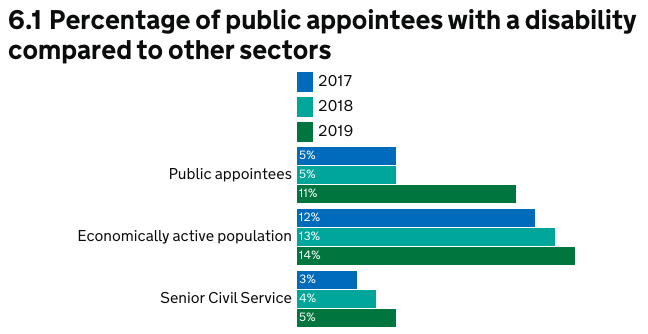
Of the 4,955 people serving in publicly-appointed roles in 2019, 379 reported having a disability – 11% of the total, up from 5% the year before.
They accounted for 9% of public body chairs, up from 5% in 2018, and 12% of board members, also up from 5%.
The Ministry of Justice had the highest proportion of public appointees declaring a disability, at 19%, followed by the Department for Transport, at 15%, and the Home Office, at 12%.
By contrast, just 3% of public appointees at the Department for Digital, Culture, Media and Sport and 4% at the Department for Health and Social Care reported having a disability. Seven departments, including the Treasury, Home Office and Foreign Office, could not provide a percentage figure because the number was so low.
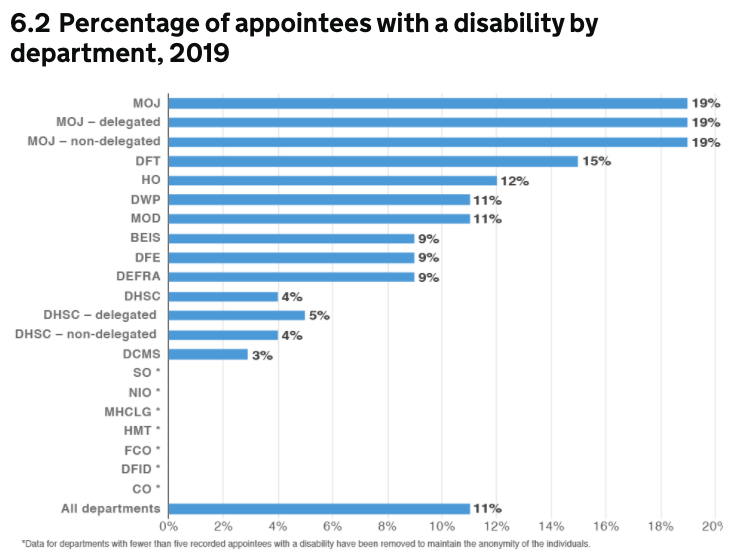
The report does not include departmental breakdowns when the department has received fewer than five responses from people with any given diversity characteristics, to protect people’s confidentiality and because the numbers are “too small to draw reliable conclusions”. These responses are, however, included in the cross-government totals.
Of those appointments and reappointments made by ministers during 2018-19, 6% declared a disability.
Ethnic diversity falls slightly
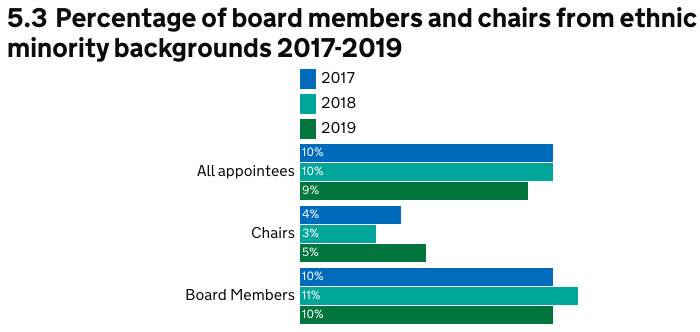
The figures showed 9% of serving public appointees were from an ethnic minority background in 2019, down from 10% the year before. The figure accounts for all appointees from a non-white background.
DHSC had the highest proportion of public appointees from an ethnic-minority background, at 15%.
At the Department for Business, Energy and Industrial Strategy, the figure was 6%, and at the MoJ, 8%.
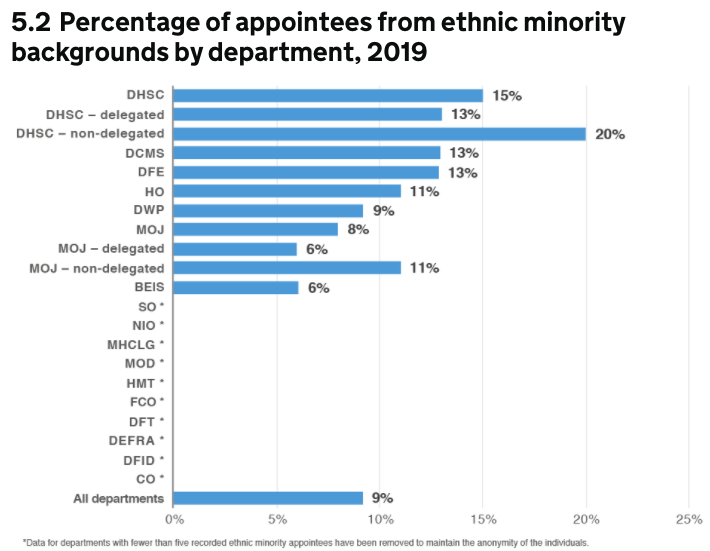
Ten departments, including the Cabinet Office, Treasury and the Department for Environment, Food and Rural Affairs, could not provide a percentage figure because the number was too low.
The proportion of appointees from an ethnic minority background in chair equivalent roles did increase slightly, from 3% to 5%.
And the report did show that the proportion of people from an ethnic-minority background appointed or reappointed during 2018-19 was higher than the overall total, at 13%. Comparable figures for previous years were not available.
Slow progress on gender equity target
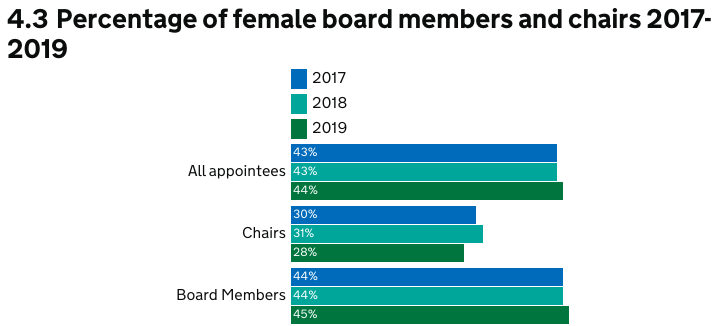
And the figures also showed slow progress towards the goal of ensuring half of all public appointees are women by 2022.
In 2019, 44% of serving public appointees were women – 1,543 in total, just one percentage point higher than the previous year.
The proportion of female board members rose from 44% to 45% in 2019, but women sat in fewer chair or equivalent roles than the year before – 28%, compared with 31% in 2018.
CSW has approached the Cabinet Office for a comment.